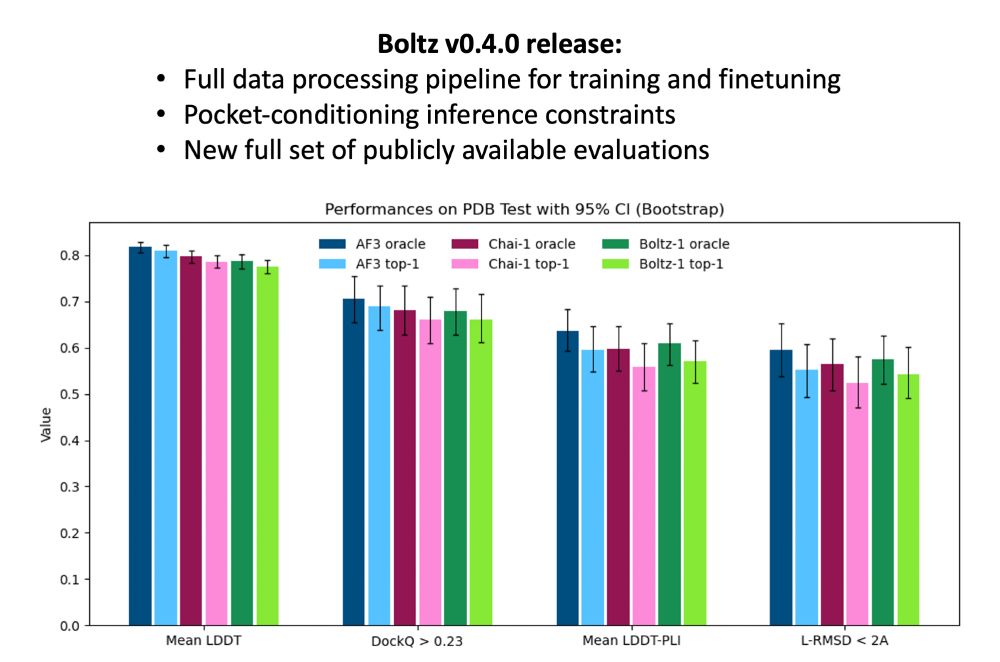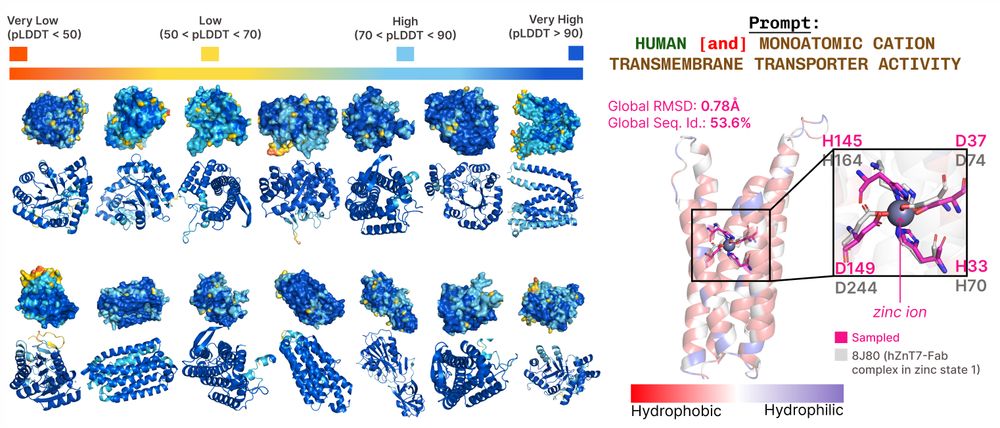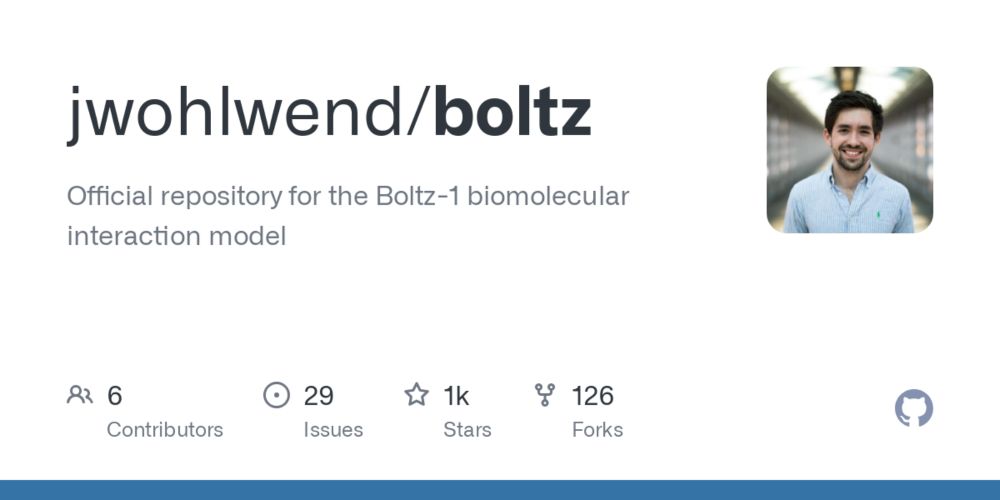

www.acellera.com/blog/aceller...

www.acellera.com/blog/aceller...


But what if we could simulate water with lower viscosity while preserving the same thermodynamic properties?
👇
But what if we could simulate water with lower viscosity while preserving the same thermodynamic properties?
👇
@mcagiada.bsky.social @sokrypton.org & I used ESM-IF to predict ∆G for folding & conformational change
Paper, code and colab
📜 dx.doi.org/10.1002/pro....
💾 github.com/KULL-Centre/...
👩💻 colab.research.google.com/github/KULL-...
@mcagiada.bsky.social @sokrypton.org & I used ESM-IF to predict ∆G for folding & conformational change
Paper, code and colab
📜 dx.doi.org/10.1002/pro....
💾 github.com/KULL-Centre/...
👩💻 colab.research.google.com/github/KULL-...
bit.ly/plaid-proteins
🧵

bit.ly/plaid-proteins
🧵
• "What [DiffDock] appears to be doing cannot be considered" docking
• "Results are ... contaminated with near neighbors to test cases"
• "Results for DiffDock were artifactual"
• "Results for other methods were incorrectly done"
arxiv.org/abs/2412.02889

www.biorxiv.org/content/10.1...
www.biorxiv.org/content/10.1...
• "What [DiffDock] appears to be doing cannot be considered" docking
• "Results are ... contaminated with near neighbors to test cases"
• "Results for DiffDock were artifactual"
• "Results for other methods were incorrectly done"
arxiv.org/abs/2412.02889

• "What [DiffDock] appears to be doing cannot be considered" docking
• "Results are ... contaminated with near neighbors to test cases"
• "Results for DiffDock were artifactual"
• "Results for other methods were incorrectly done"
arxiv.org/abs/2412.02889



🧪⚗️ 🧶🧬🐡 #c4d #CompChemSky #SciComm
🧪⚗️ 🧶🧬🐡 #c4d #CompChemSky #SciComm


www.nature.com/articles/s41...

www.nature.com/articles/s41...

